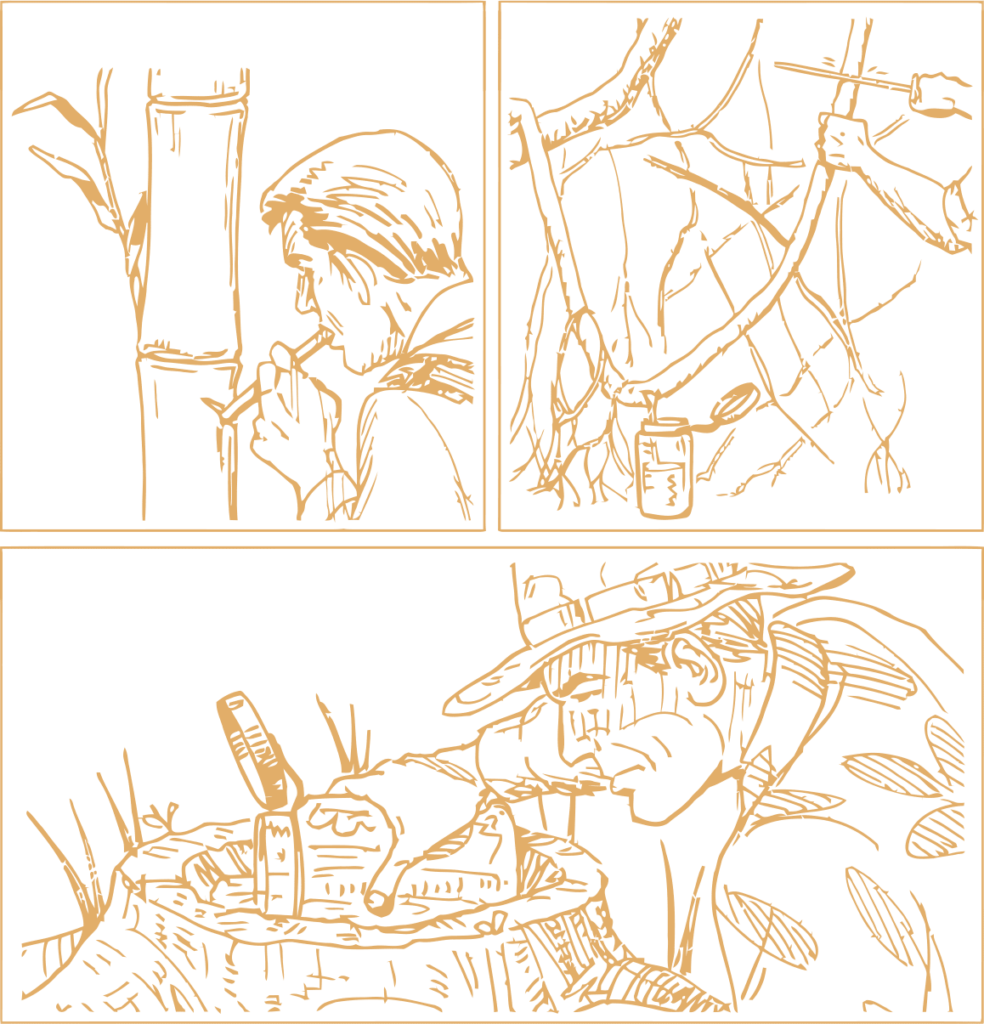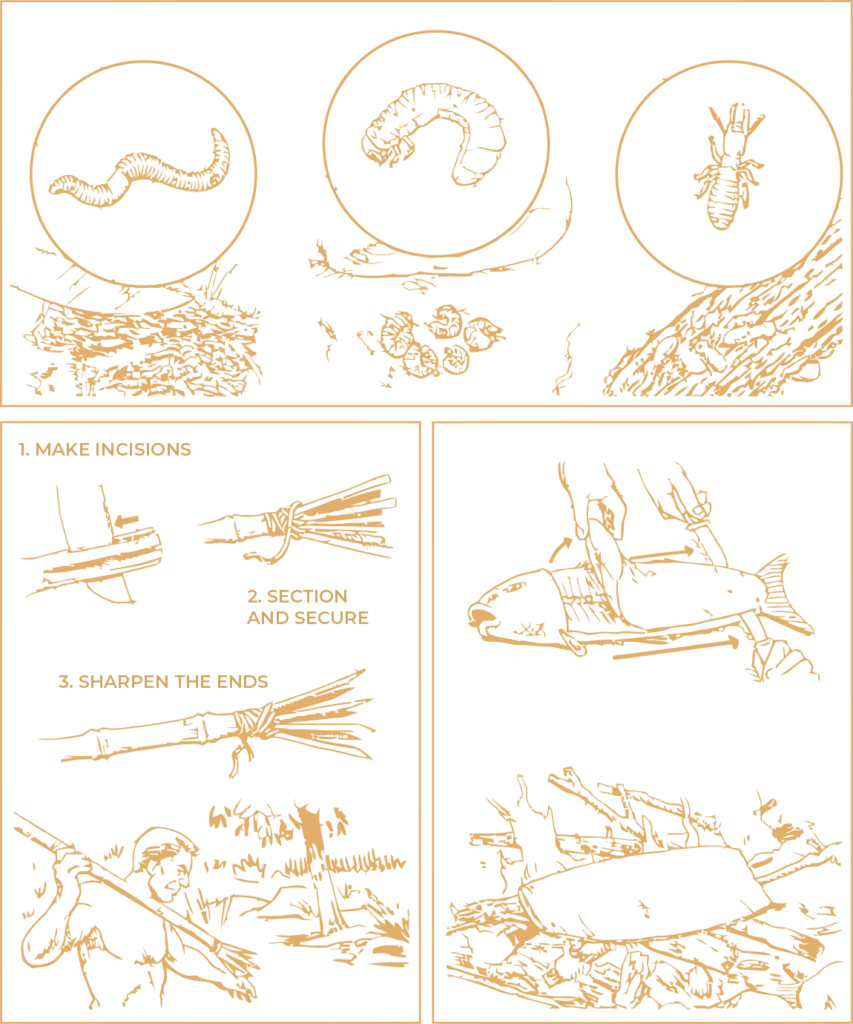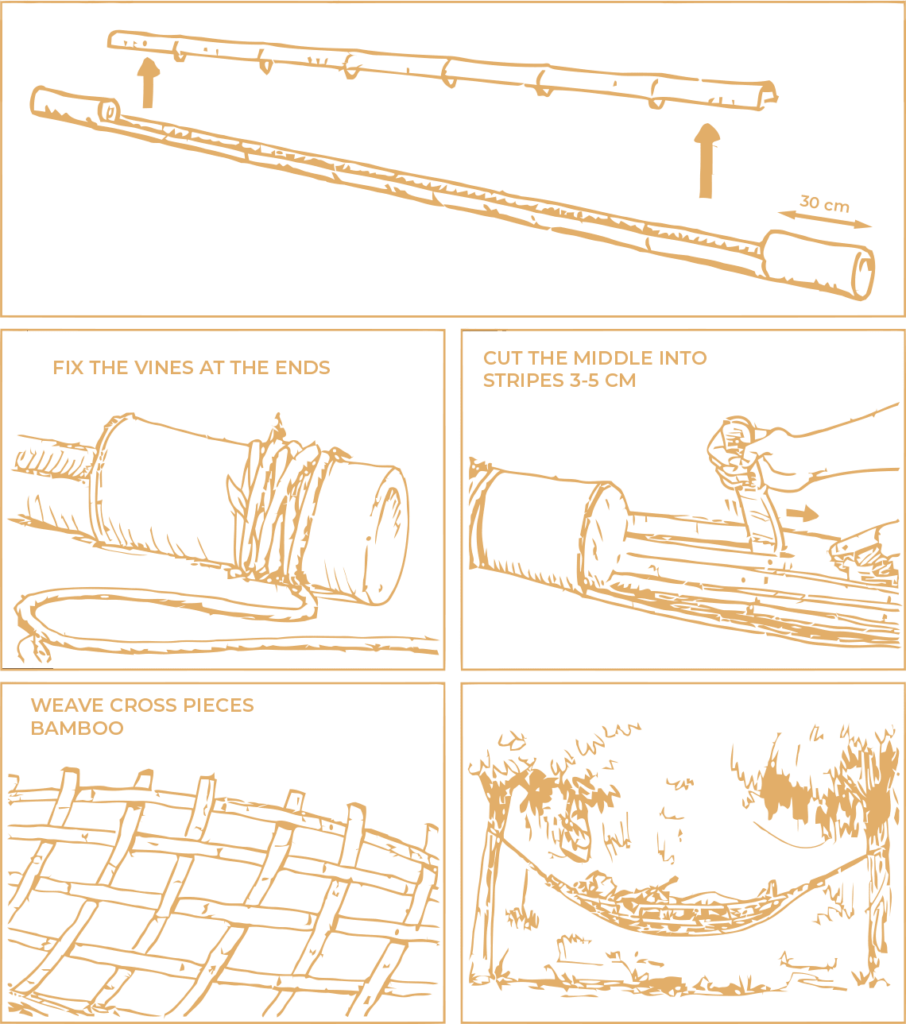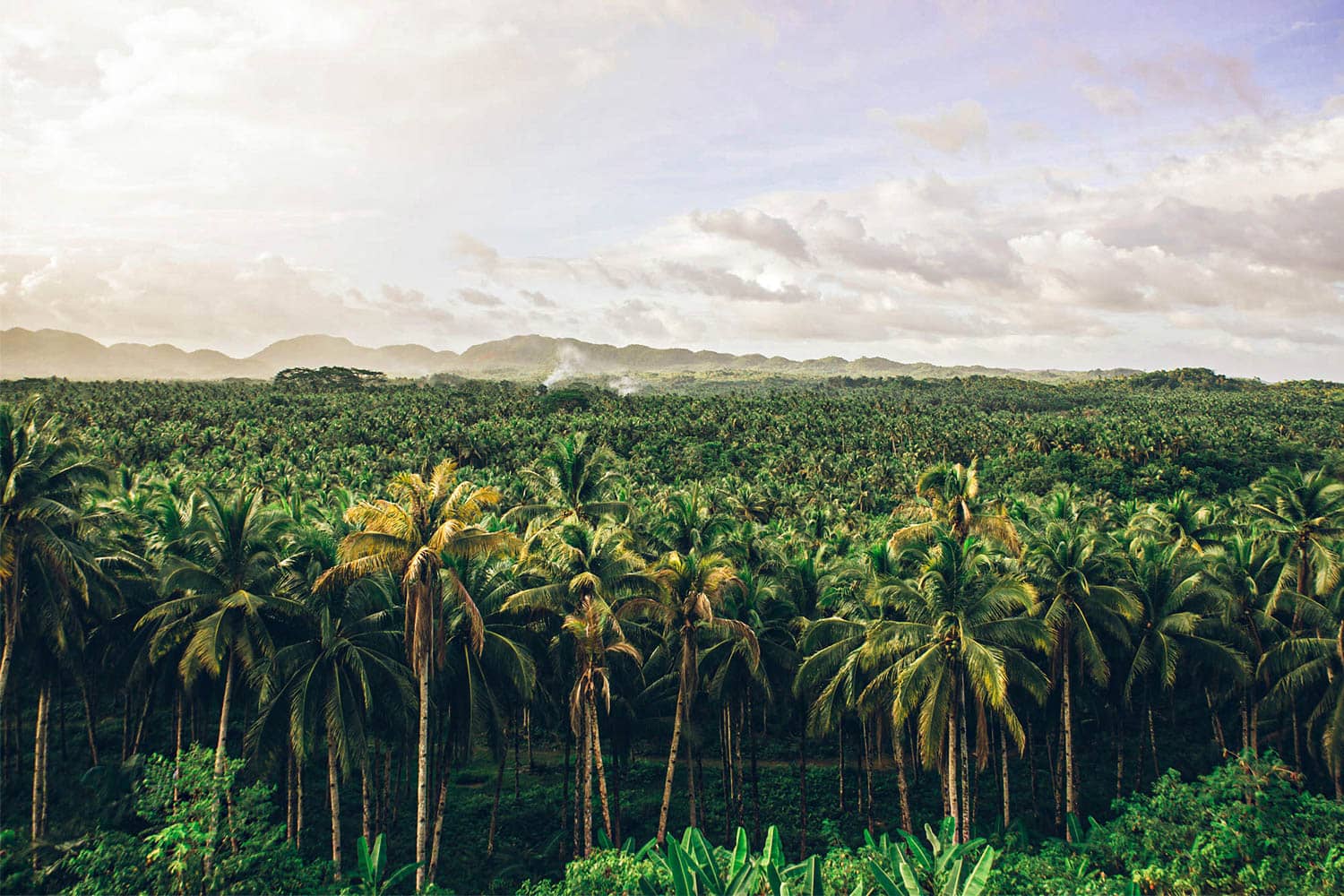SURVIVAL IN THE TROPICS
Collecting water in tropical forest
Tropical forest is the most wet environment on our planet. There are a lot of clean drinking water, but you need to know where to look for it. In these places, the likelihood of dangerous parasites and bacteria from contaminated sources is large. If you have found a river or stream and you have disinfecting pills or you have the opportunity to boil the water, you are lucky. Otherwise, try to minimize the risk of infection. You can dig a hole at a short distance from the coastline. Water is filtered in it by passing through rock rocks and bottom sediments.
Frequent rains are another source of replenishment of water deficit in the body. All you need in this case to collect water is a container. If you do not have a bottle – cut the bamboo piece slightly higher and below the node. In these nodes, the inner part of the plant is solid, and therefore you will get a “sealed” vessel that can stand on a flat surface. With this plant, direct access to the source of pure water is also obtained, filtered through the soil and its cell walls. Make a hole slightly below the node of the living, green bamboo, and then use a thinner bamboo shoot as a straw to drink water that passes through the stem.
Similarly, numerous vines of rainforest can also be used for survival.

Two cuts are made on the liana: one higher, the second lower, closer to the ground. Air enters the liana through the upper incision, which pushes the moisture contained in it down, where it can be collected when exiting the lower incision. There is also a more laborious, but effective way. In plantains and banana palms, the root system is shaped like giant bowls full of clean drinking water which come from the roots. Cutting a trunk takes strong muscles and sharp tools, but the effort will pay off.
Kindling of fire in the rainforest
Sleeping in a handmade bed is unlikely to be comfortable. But if you will kindle of a bonfire nearby, you can get a really good night’s sleep and get some much needed rest.
It can be humid and cold in the jungle at night, and many insects and predators become active at this time. Although most insects walk into the light, the smoke from the fire will scare them away. And the flame will scare away the animals.
Fire is essential for survival in any environment – both for cooking and for boiling water. In the jungle, bamboo can be used to kindle a fire. Dried stems that have fallen to the ground are best suited for this.

They are not green, but light beige.
You will need a knife to remove the bark from bamboo. The resulting shavings are useful for kindling. The core of the bamboo will act as tinder and fuel: friction creates sparks needed to start a fire. Prepare all the necessary materials. You will need about 20 movements of one half of the peeled bamboo stick along the other. To help kindle the fire, blow on it or wave your palm over the wood chips.
Numerous types of bamboo are among the most common plants in the rainforest. Bamboo stems can be used to fish, make a sleeping place, as vessel for cooking, and much more.
Eating in the rainforest
It is very easy to get sick in rainforests, as food sources in the tropics can be dangerous to humans. As with any natural environment, in the jungle mosquitoes is a big problem, that carry malaria, tropical fever, and the Zika virus. In addition, from the inhabitants of the jungle, you can contract trichinosis, salmonellosis, leptospirosis, which are widespread in these places. If you can’t cook food over a fire, look for fish, worms, maggots, and termites. Of course, it is safer to consume them after being cooked, but you can also eat them raw, as the parasites that live in them are usually less dangerous than those that live in mammals or reptiles. Plus, these foods are rich in protein, fat, and other nutrients.
Avoid cockroaches, known disease vectors, and brightly colored insects, which are most commonly poisonous.
There are many snakes, frogs and other reptiles that carry salmonella and other bacteria in the rainforest, so they should be cooked for safety. Snails, which are also numerous in these places, love to feed on poisonous plants.

Depending on your starting condition and weight, you can survive without food for up to two months. However, in order not to become so weak from hunger that you physically can’t get out of the wilderness, you need to consume about 2,000 calories per day. They can be provided by about 650-700 g of insects or from 900 to 1300 g of fish.
To catch it, use a spear made of bamboo. Go to shallow water and stand there motionless. In stagnant water, when you see fish approaching, throw grass or other small natural litter onto the surface: they will mistake your bait for beetles and swim up closer to swallow it.
Making a bamboo hammock
Land is the last place to stay overnight in the rainforest. At this time, many inhabitants of these places go out in search of prey – from centipedes and spiders to snakes, bats, wild boars and large representatives of felines. The warm body of a person who finds himself in the forest at ground level at night will attract all predators, large and small.
Therefore, the best temporary shelter in the jungle will be a nylon hammock in the form of a cocoon, in which the sleeper will be above the ground. A small, collapsible and easily assembled camping hammock, specially designed for rainforest conditions, you can be easily tied between trees, and above it, at a distance of several tens of centimeters, stretch a rope over which to throw a mosquito net. However, if your main hammock is torn (which is quite possible given how many thorny plants there are in the jungle), you can quickly make an amazingly sturdy sleeping place with just using one bamboo trunk.
Start making your bed long before the sun goes down: because of the dense crown of trees, darkness dark will come before sun disappears into the horizon.
Choose a piece of green, lively, sturdy bamboo and take advantage of the plant’s unique flexibility. To do this, cut most of this piece into horizontal strips, leaving the short ends on both sides intact.

You should choose a stem that is 60–90 cm longer than your height, with strong ends, for which you can tie it to trees with the help of vines. The resulting structure will be able to support the weight of your body.
While you sleep in a suspended position, you will be exposed to circulating air. It is cool in the jungle at night, so lay bush branches on your hammock for extra insulation.
Of course, this does not guarantee a comfortable night’s sleep, but the measures taken will maximize your chances of survival.






